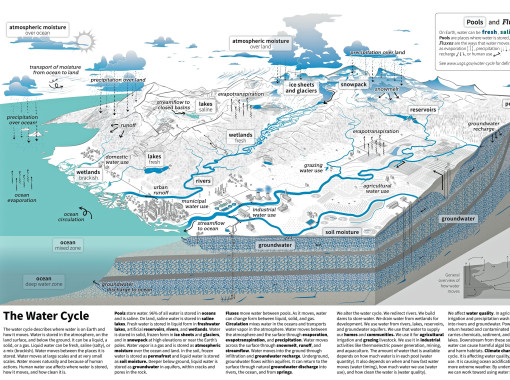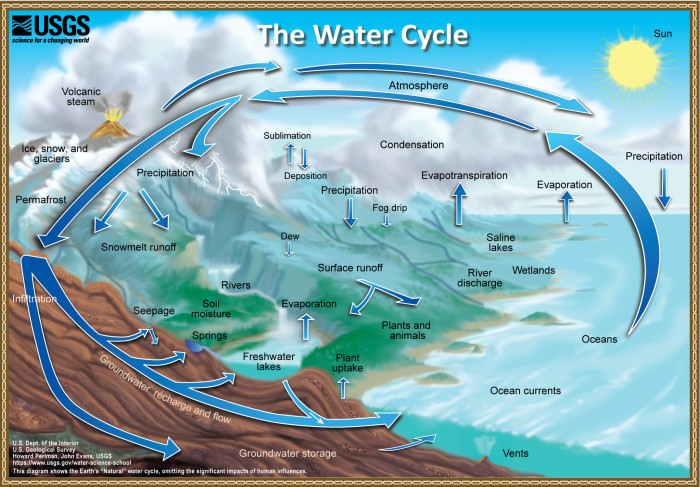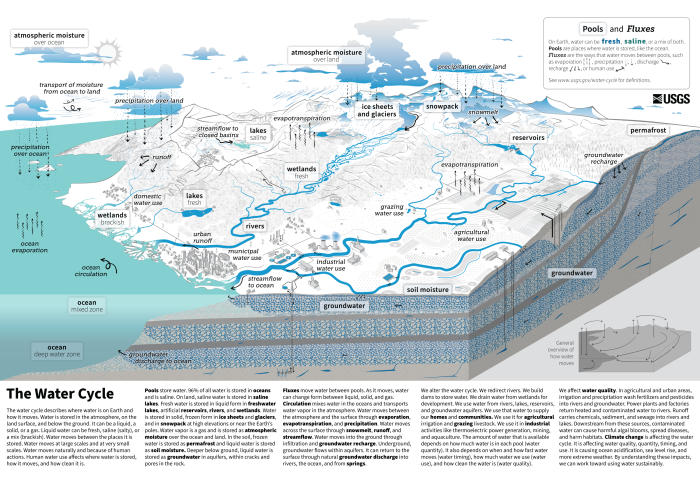Modern Water Cycle

For the first time in over 20 years, the U.S. Geological Survey (USGS) has released a new version of the water cycle diagram. The original USGS water cycle has been the basis for thousands of replica diagrams and a cornerstone of early-environmental education.

The updated water cycle has quite a few changes, but the one that stands out the most, is the introduction of humans into the cycle. Up until now, the cycle has always been considered "natural" and humans have been treated as observers with little to no impact on the cycle itself. Water research in recent years has shown that humanity plays a central and pivotal role in water on our planet. The cycle now includes human activities like agricultural water use, drilling for groundwater, and urban runoff as fluxes or ways that water moves. We have left large and indelible impressions on our environment that impact water movement, availability, and quality.

Future students will have a better understanding of the water cycle than ever before thanks to this continuing educational content. To learn more about the changes and the new water cycle, visit the USGS Water Science School online.
